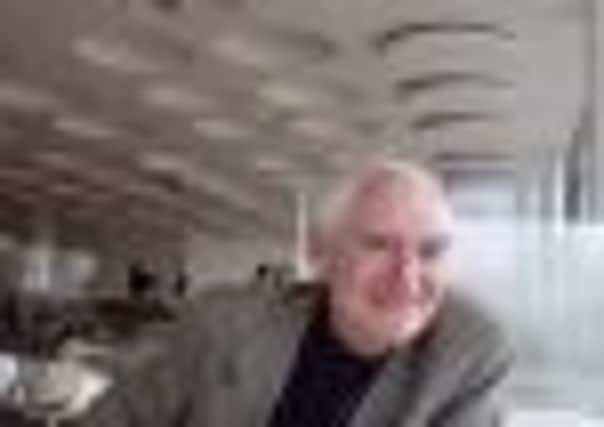Obituary: John Scott, multiple award-winning structural engineer who helped to build Livingstone


john was born in Glasgow in 1926, the second of four sons of William Hood Scott and Cecilia Jenkins Rodger.
Active in both the Scouting world and Glasgow’s Barony Youth Club as a young man, he joined the Scottish Signal Regiment, which many years before had adopted the uniform of the Royal Engineers – a portent perhaps because it was engineering that would bring John the many accolades he won in his life. It also helped him to express his philanthropic nature, which brought low-cost housing to Zambia and helped many young engineers from Romania to study in this country.
Advertisement
Hide AdAdvertisement
Hide AdJohn graduated from Strathclyde University in 1951 with an honours degree in building and civil engineering and went on to work with FA McDonald and Partners in Glasgow.
From 1953 until 1964 he was a senior engineer with the Scottish Gas Board, where he designed and constructed heavy industrial plant for the gas industry. He became a member of the Institution of Structural Engineers in 1957; many years later he would join its education and training panel.
In 1964 he founded Exposagg Ltd, a company specialising in exposed aggregate in situ concrete and which he would be involved until his death. The company won a Concrete Society award in 1971.
John then spent two years helping to construct Livingstone New Town, bringing his expertise to building pre-cast concrete houses using the Jesperson 2M system and insitu concrete underpasses using sawn and exposed grain timbers to produce very high quality finishes.
His most prolific work in this country was as principal structural engineer for the Scottish Special Housing association, where he designed and oversaw more than 2,000 houses a year as well as working on a variety of other buildings and bridges. He began using No-fines concrete, a lightweight concrete which has numerous advantages over conventional concrete, such as lower shrinkage, lower cost and better insulating qualities.
He took this expertise to Zambia in 1984 to build houses for the National Housing Authority there. The homes he built helped house many Zambians and refugees coming over from Angola and Mozambique.
But working in Zambia, with its political and economic problems, wasn’t easy and John returned to the UK to work as a consultant helping with inner-city housing. He remained in contact with many friends and colleagues in Zambia and paid many visits.
He also presented papers on No-Fines concrete across the world from New Delhi to Singapore, as well as addressing the World Congress on Housing about it in 1989.
Advertisement
Hide AdAdvertisement
Hide AdJohn didn’t take a traditional retirement, becoming a part-time-lecturer at Heriot-Watt University in Edinburgh. After the Romanian Revolution of 1989 he began to think of how he could help young engineering students in a post-communist era and made contact with the University of Timisoara, which was to lead to more than 22 years of fostering young talent and an interchange of both students and staff.
He founded the Scottish Romanian Universities Exchange which funded students to study in Edinburgh – a cause he spent much of his own money on. But it was always much more than an official arrangement for John, who opened his Ramsay Garden home to many students, counselled them and made friends for life with many.
He was awarded an Excellency Diploma by the University of Timisoara in 2004 but as ever John was keen to stress that this was simply because of the Romanians’ bounteous spirit.
In 2000 John was awarded the Concrete Society’s Certificate of Excellence for Mature Structures for one of the projects he was most pleased with – the creation, casting and construction of an exact replica of the Cross of St John in high quality pre-stressed concrete. The replica cross stands proudly at the main entrance to the abbey and is indistinguishable from the stone fragments of the original cross. In the same year he won the Institution of Structural Engineers Scottish Branch Services Award for his work for it and particularly for his activities in developing international relations.
In 2004 the institution recognised him once again with one of its most prestigious honours, the Lewis Kent award for personal services.
Away from work John had many interests and friends and was very involved in the community, from his church Greyfriars to the Ramsay Gardens residents association, and he campaigned vociferously on many fronts. He was a frequent contributor to The Scotsman letters page and in the past few years had campaigned against the structure of the new stands for the Edinburgh Tattoo.
He loved to walk around Edinburgh, his adopted hometown, though he never lost his love for his birthplace, Glasgow. He appreciated the many fine restaurants in the capital – and a good debate. He was close to all three of his brothers throughout their lives.
John’s funeral service at Greyfriars was attended by hundreds, a true testament to the number of lives he touched. The congregation was made up of people of all ages and from all walks of life.
Advertisement
Hide AdAdvertisement
Hide AdA letter from the Romanian ambassador to the UK, Dr Ion Jinga, was read to the congregation. It said: “John Scott meant a lot to me and my wife Daniela. He was a fantastic support for developing academic relations between Romanian and Scottish universities and also in offering his energy into the accomplishment of noble causes. I remember the warm welcome he organised during my visit to Edinburgh in 2010 as well as the interesting and inspiring talks we had on several occasions we met either in London or Edinburgh.
“I will miss him a lot; his advice and suggestions, his touching personality and character. His departure is a great loss both for the academic community and his friends.”
John leaves behind three nephews and five nieces who loved him dearly as an uncle, a friend and an inspirational man.
HILARY SCOTT